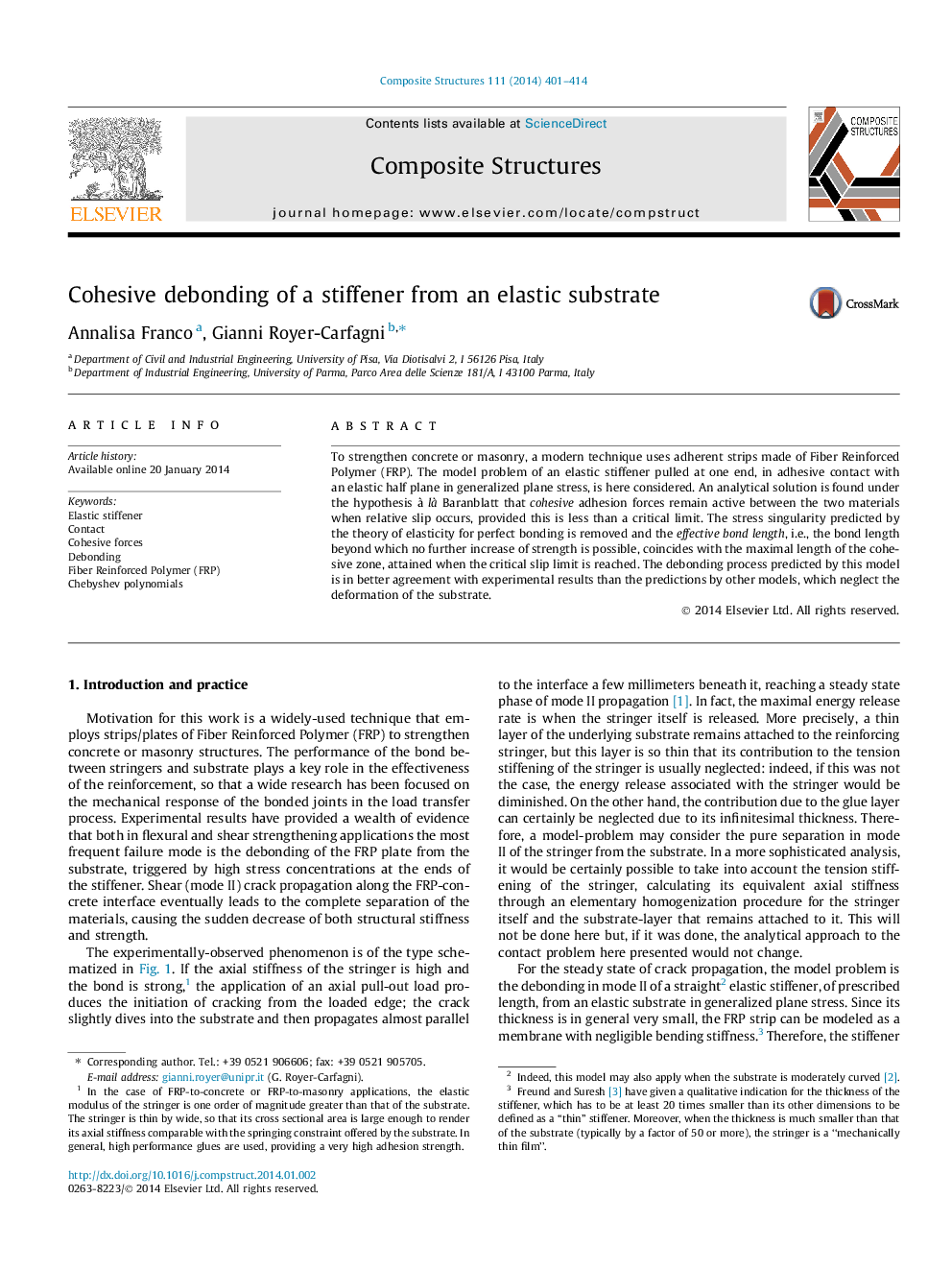| Article ID | Journal | Published Year | Pages | File Type |
|---|---|---|---|---|
| 6708010 | Composite Structures | 2014 | 14 Pages |
Abstract
To strengthen concrete or masonry, a modern technique uses adherent strips made of Fiber Reinforced Polymer (FRP). The model problem of an elastic stiffener pulled at one end, in adhesive contact with an elastic half plane in generalized plane stress, is here considered. An analytical solution is found under the hypothesis à là Baranblatt that cohesive adhesion forces remain active between the two materials when relative slip occurs, provided this is less than a critical limit. The stress singularity predicted by the theory of elasticity for perfect bonding is removed and the effective bond length, i.e., the bond length beyond which no further increase of strength is possible, coincides with the maximal length of the cohesive zone, attained when the critical slip limit is reached. The debonding process predicted by this model is in better agreement with experimental results than the predictions by other models, which neglect the deformation of the substrate.
Related Topics
Physical Sciences and Engineering
Engineering
Civil and Structural Engineering
Authors
Annalisa Franco, Gianni Royer-Carfagni,
